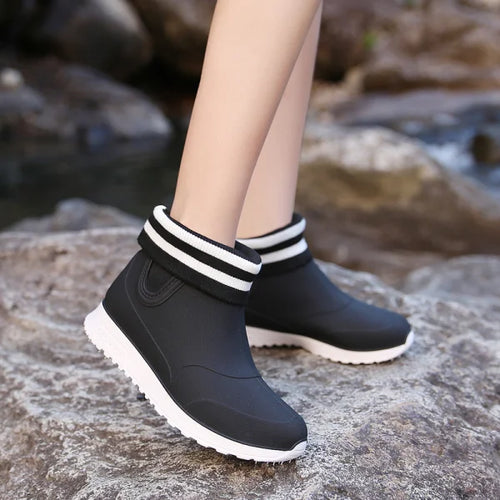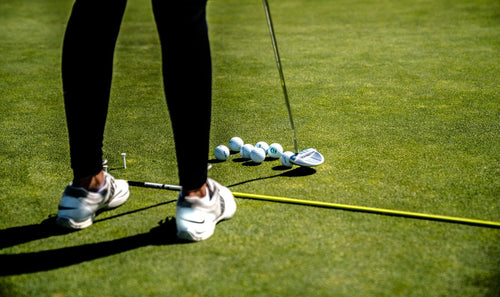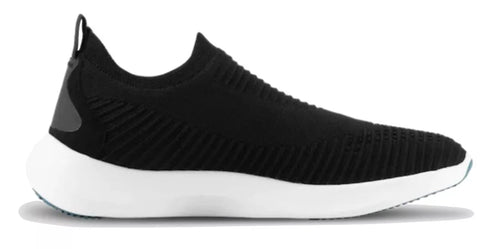Don’t you just hate it when you finally find the perfect pair of waterproof running shoes, but they turn out to be the wrong size? After all, you were extra careful, what with the extensive research and size conversions.

But if you still haven’t been able to find the perfect fitting running shoe, the chances are that you probably messed up somewhere in the process of measuring your shoe size.
Determining your shoe size is tricky enough as it is. But when it comes to running sneakers, the rules of the game are completely different.
So, if you want a running start in finding the perfect fitting running shoe, keep on reading.
The Myth of the Universal Shoe Size
Shoe sizes are more complex than what you might initially think. While size charts may initially seem helpful, they are actually quite deceptive. This is because there is no universality to shoe sizes.
Not only do different regions of the world use different shoe size systems, but these systems of measurement actually differ from manufacturer to manufacturer and brand to brand in the same region.
Does this mean that there is no universal standard against which shoe size is measured? Well, yes and no.
In reality, there are multiple standards of measuring shoe size, and the decision to choose this standard lies with shoe manufacturers and brands.
Luckily, running shoe brands will typically provide their own size charts. These size charts show how the brand’s shoe sizes differ from the standard system.
Are Your Waterproof Running Shoes Too Small For You?

A study published in the Journal of Foot and Ankle Research revealed that a large portion of the population- roughly 63% to 72%-wears shoes that are the wrong size for their feet.
A direct and salient consequence of incorrect shoe size was determined to be foot pain and foot deformities. Unfortunately, this has detrimental implications for avid runners.
But how do you know that you’re wearing the wrong sized shoe?
Sometimes, wrong-sized running sneakers may feel like they fit well; they don’t feel too tight, nor do they slip off your feet. But in reality, they’re causing you a lot of harm. Here are some subtle giveaways that you’re wearing the wrong shoe size:
- Your heel slips when you’re walking or running uphill, causing you to lose balance.
- Your toenails are bruised even though they’re short.
- Your arches ache when you run
- You have developed blisters, bunions, or corns on your feet.
- The top of your foot becomes numb while you’re running.
If you’ve experienced any of the aforementioned symptoms, then you need to reevaluate a few things. Specifically, you need to remeasure your shoe size.
A Rule of Thumb
When it comes to running shoes, the general principle is that you should go for a size that is slightly larger than your day shoe.

The main reason for this is that your feet tend to swell with increased exertion, and nothing strains your feet more than running. Hence, your shoes need to have some extra room to accommodate this inflammation.
But how much extra room are we talking about here?
A simple way to measure how much additional space you need is by using your thumb as a visual reference. Basically, you need to leave a thumb’s width worth of space between your largest toe and the end of the toe box.
Try it out: after fastening your shoes, place your thumb perpendicular to where your largest toe rests. Then, press down on the toe box. If the amount of empty space is roughly equal to the width of your thumb, then you’re good to go.
Always Opt For Waterproof Running Shoes

Water and moisture can cause your shoes to shrink in size. This constant shrinking and expansion can permanently alter the shape of your shoe.
To avoid this problem altogether, you should go for waterproof running shoes. Because they don’t soak up water, these waterproof running shoes will never alter in their shape or size.
How to Measure Your Running Shoe Size
You might think that your shoe size is determined exclusively by your foot length. However, there is an additional component to shoe sizes: the foot width.
Therefore, it is important to consider both length and width in order to find the perfect fit.
Step 1: Measure Your Foot Length
Measuring your foot length is pretty straightforward as far as casual day footwear is concerned. When it comes to running shoes, however, there are some extra steps that you need to take.

Firstly, you need to wear running socks while measuring your foot length. Running socks can differ from regular socks, in that they can be thicker or thinner. Some running socks, for example, have some extra padding in the heel, which might add a few millimeters to your foot length.
Secondly, and in a similar vein, you should always measure your foot size at the end of the day. This is because your feet tend to swell as the day progresses. So, you want to measure them at their largest.
Thirdly, you need to measure both feet and pick the larger size. Yes, you heard that right: your feet are not the same size as each other. When picking running shoes- or any shoes for that matter- always use your larger foot as the reference point. If you don’t know which one of your feet is bigger, you’ll have to measure both your feet and pick the larger size.
So, with your running socks on and the day ending, you are now ready to measure your foot length:
- You will need a measuring rule and a piece of paper.
- Trace your foot on a piece of paper. Ideally, someone else should do this for you. Make sure to keep the pencil perpendicular to the paper.
- Using a ruler, measure the largest length- from your heel to your biggest toe. This length should be in centimeters.
- To make things easier for yourself, you can convert the length from centimeters to inches.
Step 2: Measure Your Foot Width
Foot width accommodates the different types of foot arches- low, normal, and high. The higher your foot arch is, the narrower your foot will be.
To determine your foot width, just refer to the same piece of paper on which you traced your foot. Then, measure the width of your foot along the widest part of the trace.
Step 3: Refer to a Size Chart
Now that you know your foot length and foot width, you can refer to a size chart to determine your foot size.
Remember: you have to go for shoes that are slightly bigger than your measured foot size. So, if you are a US size 7 for your day shoes, then a US size 7.5 will be a much better fit.
Step 4: Try On The Shoes
The only thing left to do now is to try on your shoes to see if they fit well.
Try sliding your index finger down the heel of the shoe. If your finger slips in with ease, then the shoe is too big. Conversely, if you have to force your finger inside, then the shoe is the right size.
Then, try walking around the room. If you have space, you can even test the shoes out by breaking into a slight jog.
While you’re jogging, the heel shouldn’t move around too much. Instead, your feet should be locked in place.
Step 5: Customize Your Fit
Sometimes, the shoes can feel a little loose because of their design, which is something that can’t be helped. For example, the ankle collar might feel too big or too snug. Similarly, the shoe can feel too snug around the top of your feet.
However, there’s an easy fix for this.
It turns out that you can customize your fit by playing around with the lacing system. For instance, the runners’ loop will help resolve the problem of loose collars. On the other hand, a parallel lacing system will help loosen the shoe around the top of your feet.

Better yet, you can minimize this design-based problem by going for flexible running shoes like the Loom Waterproof Running shoes. These shoes boast a 4-way stretch Merino Wool interior which is a naturally flexible material.
Conclusion
No matter how good a running shoe is on its own, everything can go downhill if you don't have the right size.
So, when you’re in the search for the perfect running sneakers, there are a few rules you need to keep in mind. This includes sizing up and narrowing your choices down to flexible waterproof running shoes.


























